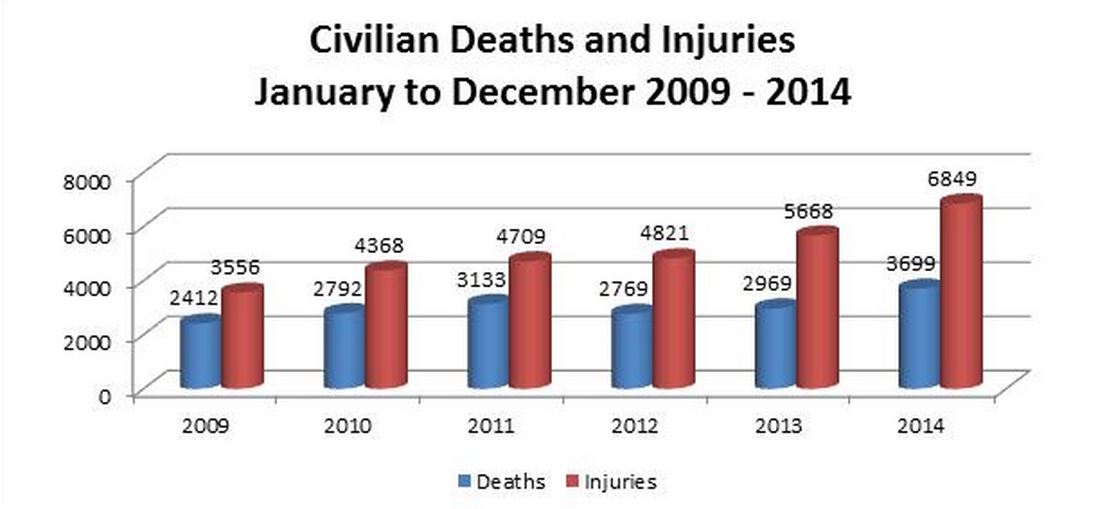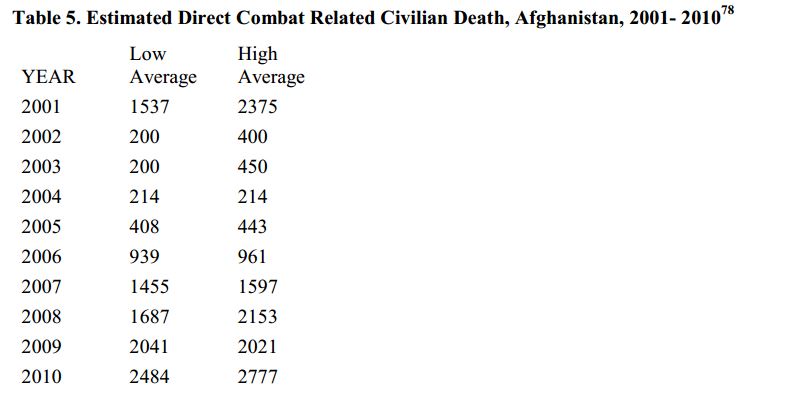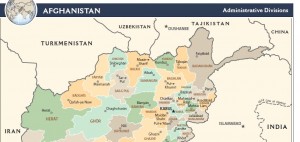In War That Didn’t End, UN Finds Afghan Civilian Deaths Up 25% Over Previous Year
Washington has tried its very best to sweep the war in Afghanistan under the rug. Most of the press dutifully went along with the fiction of declaring the war to have ended in December. The military joined in, trying to classify virtually all information coming out of Afghanistan. That classification move has been backtracked somewhat, but we still haven’t seen a revised quarterly report from SIGAR with the newly released data.
For those who care about the truth of what is really taking place in Afghanistan as a result of the misguided US action, it is a good thing that Washington cannot stifle information flowing out of the United Nations Assistance Mission in Afghanistan. UNAMA has been tracking civilian casualties in Afghanistan since 2009, and their latest report was released today (press release is here and full report in pdf form is here). The news is not good at all. Deaths jumped by 25% from 2013, going from 2969 to 3699. Injuries also showed a sharp increase, from 5668 to 6849. These numbers simply do not comport with the rosy statements coming out of the Pentagon on what our troops in Afghanistan “accomplished”, how the Taliban are being defeated and how the ANSF are now “hugely capable”. Civilian casualties in Afghanistan have shown a relentless rise since the UN started collecting data:
It is harder to find data for the years leading up to 2009, but here is one report (pdf) in tabular form from Costs of War:
The figures from this report include only a subset of the types of death tracked by UN, accounting for the slight discrepancy in the years of overlapping data.
US military operations and continued presence in Afghanistan has been a disaster for civilians there. The insurgency which has arisen in response to the US presence is responsible for most of the casualties, but it is hard to see how these numbers would be as high if the US had simply left after deposing the Taliban in the first few weeks of the operation.
In addition to tracking casualties, the UN collects information on war crimes. Units of the Afghan Local Police are notorious in this regard (ALP most often are comprised of private militias that have been given a brief bit of training by US death squad trainers from JSOC and/or CIA). From the report:
For example, on 11 July, an ALP member shot and killed a local shopkeeper after an argument over ice. On 7 July, an ALP commander and four of his men assaulted (and injured) four civilians in Jorum district, Badakhshan province, during a wedding party. The reason for the beating was reportedly that the family had failed to provide food to the ALP as demanded.
UNAMA documented multiple examples of ALP intimidating and ordering the displacement of families from their communities. For example, on 12 October, ALP forcibly displaced 150-200 families from Khak-e-Safed district, Farah province. The ALP had warned the local population not to allow the Taliban to launch attacks from the village. The Taliban had also threatened the local population not to cooperate with the ALP. After Taliban fighters established positions in the area, the ALP ordered the 150-200 families to leave the area, resulting in displacement of an entire village, mainly to Farah city.
I would imagine that someone in Washington is busy today trying to find a way to prevent UNAMA from releasing its next report.



